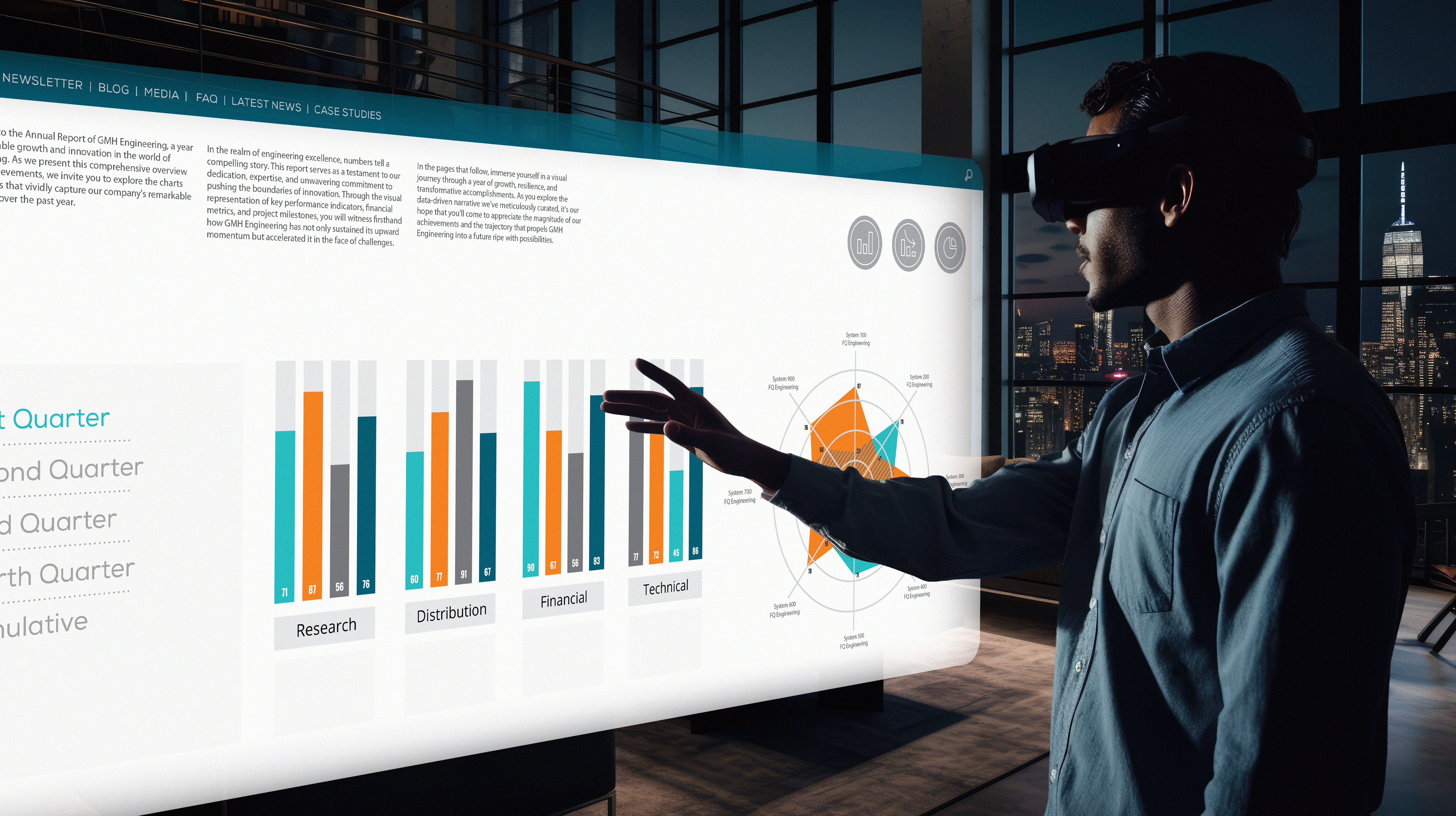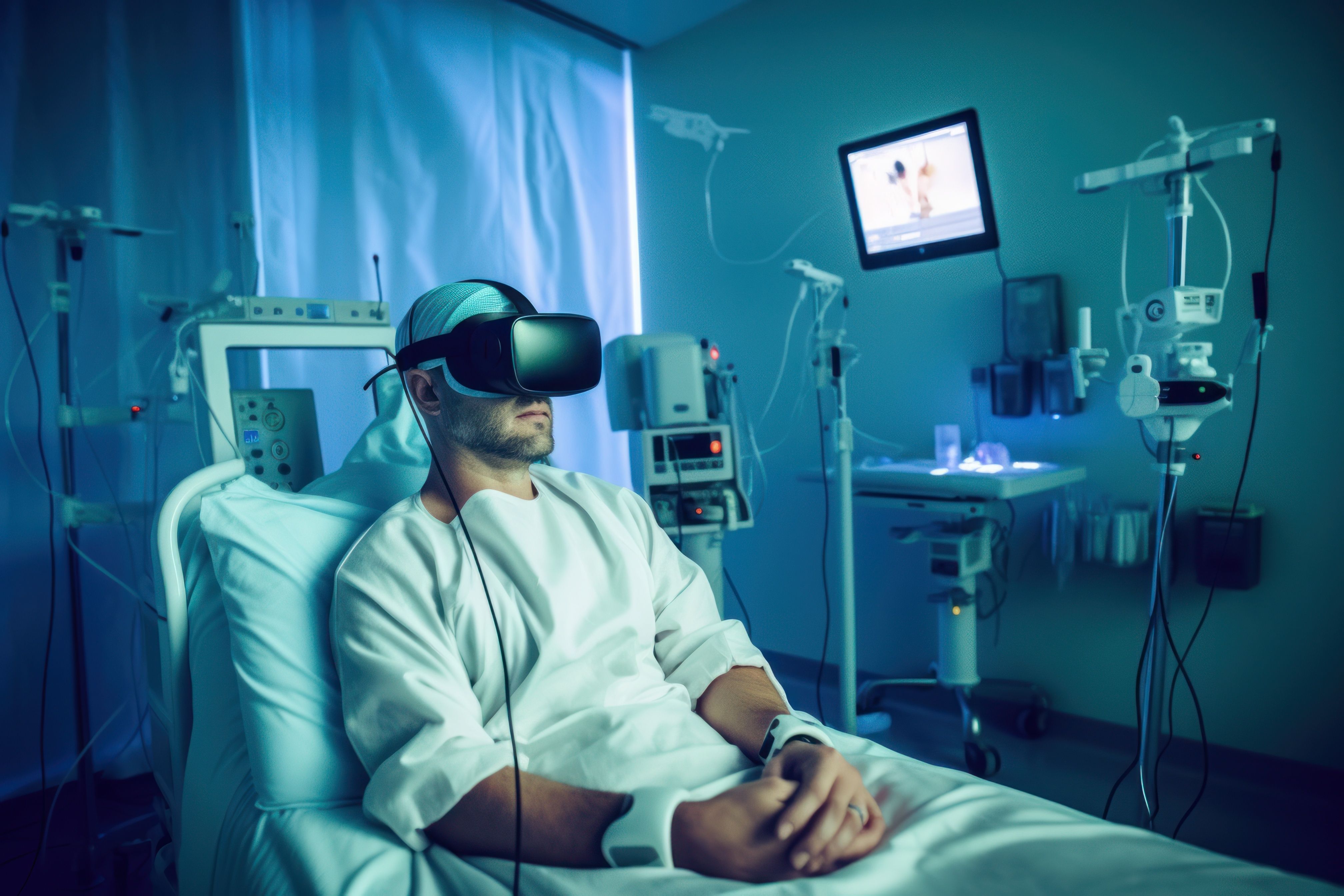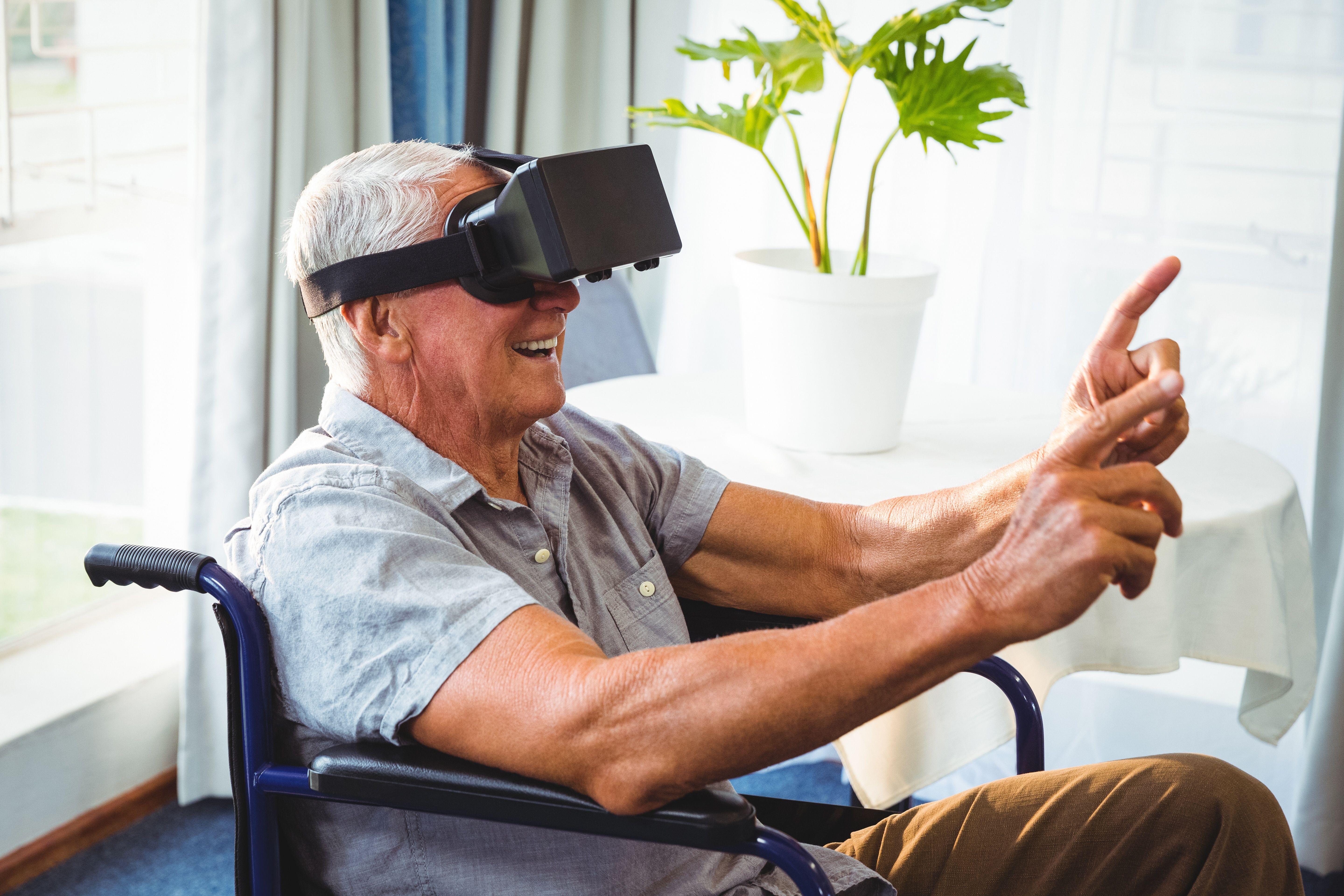In healthcare, technology remains a crucial protagonist. It’s reshaping patient care, optimizing systems, and introducing groundbreaking methods for both diagnosis and treatment. A technological marvel that stands at the forefront of this transformation is virtual reality (VR). While VRT has traditionally been linked with gaming and entertainment, it’s now surging ahead in the medical domain. Through immersive experience, VR is poised to revolutionize multiple facets of healthcare, presenting fresh avenues for patient treatment and recovery. This blog post will focus on the integration of VR technologies into physical rehabilitation. We also delve into the definition of virtual reality and its application to the healthcare industry.
Understanding Virtual Reality
VR refers to a computer-generated simulation where users engage with a fabricated 3D environment through electronic devices like goggles with screens or gloves equipped with sensors. This technology engenders immersive, realistic encounters, capable of emulating reality or giving rise to imaginative realms.
The emergence of VR can be traced to the 1960s, with the creation of the first device known as the Sensorama simulator. This innovative creation was crafted to authentically replicate genuine human experiences and senses. This pioneering invention laid the foundation for the virtual reality landscape that we encounter in the present day.
VR’s potential surpasses its role in gaming. It finds utility in education, furnishing, architecture, and even within the military. Yet, one of VR’s most promising frontiers lies in the healthcare sector.
Its application span pain management, surgical planning and education, mental health therapy, and most notably, physical rehabilitation. Through controlled and secured environments, VR enhanced patient care and treatment outcomes.
The Role of Virtual Reality in Healthcare
Virtual reality has emerged as a crucial asset in the healthcare sector, offering valuable assistance to patients dealing with various medical conditions. Whether it's alleviating chronic pain or educating aspiring medical professionals, VR is revolutionizing the landscape of patient care.
Let’s take a closer look at three applications of virtual reality technologies in the healthcare sector.
Helping Patients with Chronic Pain and Stress
Chronic pain is one of the most common medical conditions, and it can significantly impact patients’ life quality. Traditional pain management techniques may not always be effective, leading patients to seek alternative solutions.
Virtual reality has emerged as a promising alternative for managing chronic pain. For example, Harvard Health reported that projecting serene, virtual environment could have a calming effect on patients with chronic pain. This effect can be enhanced for patients with prolonged stress by adding guided meditations and breathing and relaxation exercises.
Treating Phobias and Anxieties
Millions of people worldwide are affected by phobias and anxiety disorders, which are common mental health conditions.
The most widely used treatment for these disorders is cognitive-behavioral therapy (CBT), which involves exposing patients to their phobias and teaching them how to develop coping strategies.
According to research published in the Journal of the Korean Academy of Child and Adolescent Psychiatry, virtual reality devices have a significant impact on treating social phobia.
The study also explores how virtual reality can be used to address psychiatric conditions such as anxiety, post-traumatic stress disorder, and addiction. It also highlights the application of VR in treating children and adolescents with psychiatric disorders.
Medical Training and Education
Virtual reality has undeniably revolutionized medical training and education. It's not uncommon for medical professionals to rely heavily on VR simulations to hone their skills for complex and risky procedures.
For instance, surgeons can use virtual reality technology to simulate and practice procedures in a realistic and immersive environment. By leveraging VR, surgeons can gain valuable hands-on experience and refine their skills before performing actual surgeries, ultimately enhancing patient safety and surgical outcomes.
Additionally, medical students can incorporate virtual reality technologies into their education, recreating diverse medical scenarios, such as emergencies and medical examinations, to gain a deeper understanding of cases and improve their skills.
Virtual Reality and Physical Rehabilitation
Although there have been improvements in treatments and medical techniques for physical rehabilitation, there are still several challenges that need to be addressed in this field.
However, the emergence of virtual reality technologies has given rise to innovative approaches to physical rehabilitation that differ from traditional techniques.
Let us delve into how VR can improve physical rehabilitation, a crucial process in aiding individuals to recuperate from physical injuries, disabilities, and illnesses.
Life Quality of Individuals with Chronic Pain
Chronic pain, a widespread medical condition in people with physical disabilities, has a profound impact on a patient's quality of life. It is not solely confined to physical discomfort but also intertwined with mental health issues such as anxiety, depression, and negative self-talk. Given the intricate nature of chronic pain, innovative treatments are imperative.
VR has the potential to assist individuals with disabilities in managing chronic pain and promoting recovery. By utilizing VR in different scenarios, people can enhance their physical well-being, stimulate movement, regain functionality, and alleviate pain, improving their life quality.
Patient Engagement Enhancement
The level of engagement VR provides, to patients is one of the most significant advancements in the application of this technology in healthcare institutions.
Patients may lose motivation and drive when undergoing conventional therapy due to its monotonous, dull, and tiresome nature. Fortunately, virtual reality has revolutionized the rehabilitation process by providing immersive activities that simulate real-world therapies.
This technology is revolutionary, enhancing motivation and concentration, and reducing stress levels in rehabilitation. In stroke recovery, VR has the potential to offer immersive, personalized therapy, real-time feedback, and increased motivation and engagement. Moreover, VR provides a cost-effective alternative to traditional in-person therapy sessions.
Stimulates Faster Recovery
VR in physical rehabilitation offers another benefit: it stimulates faster recovery. As reported by Frontiers in Neurology, patients using VR in their rehab programs have shown reduced recovery time and improved functional outcomes. The immersive VR simulation helps create powerful neural pathways, leading to a more effective recovery.
Personalization
VR software and hardware facilitate the customization of rehabilitation programs to accommodate individual needs and conditions. By harnessing advanced analytics, virtual reality technologies can provide real-time evaluation of a patient's progress and adjust rehabilitation programs accordingly.
Provides a Safe Environment
Virtual reality offers a secure and controlled space for patients to enhance their motor skills and coordination without the fear of falling or worsening their condition. In addition, virtual environments allow patients to complete exercises that could be dangerous in real-life situations, like walking on unstable surfaces.
By incorporating VR into physical rehabilitation, patients can safely push their limits and make steady progress on their road to recovery.
Conclusion
Technological advancements have greatly enhanced the effectiveness of physical rehabilitation. Among these innovations, virtual reality stands out as an impressive tool that can improve the overall experience for patients.
By reducing stress and increasing motivation, virtual reality plays a crucial role in successful recoveries. Additionally, its ability to demonstrate strength development and provide precise movement assessments makes it invaluable in hospital settings.
As virtual reality continues to revolutionize physical rehabilitation, there is immense potential for innovative ideas that can elevate healthcare to new levels. With the integration of virtual reality, the healthcare industry may experience unprecedented levels of innovation and transform the field of physical rehabilitation.
If you're interested in implementing VR technologies in your healthcare institution, reach out to us. We'd be happy to assist you.


